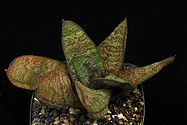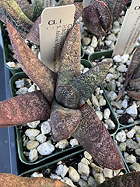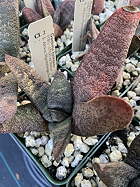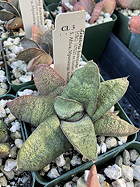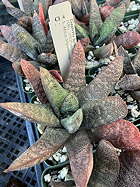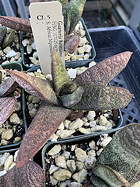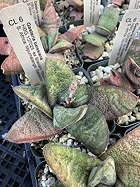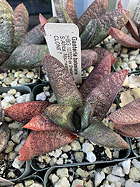Gasteria batesiana is arguably the most popular member of this genus. Its formal description by Gordon Rowley was not until 1955, but without information about its origin. According to the British CSS webpage about this plant, the epithet honors John T. Bates (1884-1966), a trolley bus conductor in London and an avid collector of South African succulents. The clonotype is now thought to have been collected by Frank Frith of the South African Railways in 1924 and reached Europe some years later. It has become the nearly ubiquitous representative of this Aloe-allied group in collections and general horticulture as a container succulent tolerant of low light and neglect. But a well grown specimen in brighter light can truly be a thing of beauty when it blushes reddish and develops especially rough and rigid leaves. The affinity of Gasteria to Aloe is confirmed by many intergeneric hybrids, placed in the nothogenus xGasteraloe, but these are a dead end to further hybridization, as they are typically sterile. The most commonly cultivated form of G. batesiana happens to be the one distributed as ISI 460 in 1965, but again without habitat information. It appears identical to the clonotype illustrated in Rowley’s description. This stands out for its tapering leaves with beautiful patterning of smaller white surface tubercles with larger dark green ones matching the ground color of the leaf. Other forms have since been introduced with more parallel sided leaves and varying patterning and color, some blushed red to purple. Here we offer several sibling forms with varying degrees of these features. Divisions of HBG 107025, Clones 1 through 8, ex Sheilam Cactus Farm, near Robertson, W. Cape, S. Africa, imported in 2002. These were grown from seed collected at Barberton, Mpumalanga, S. Africa. $12.
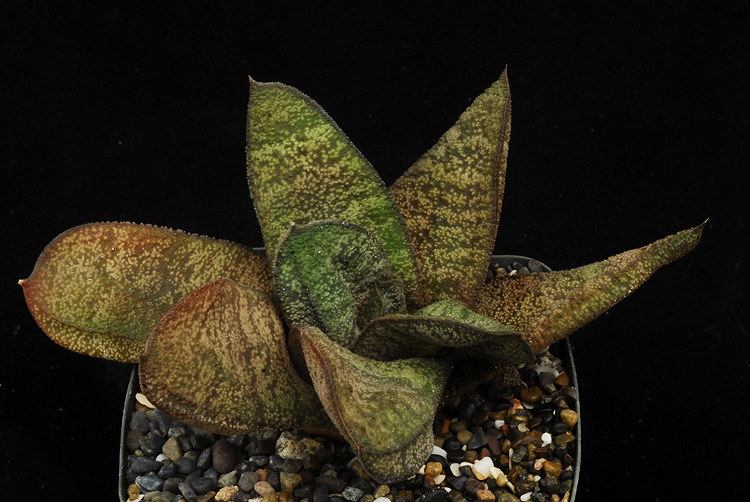
Published in the Cactus and Succulent Journal, Vol. 97 (2), Summer 2025
